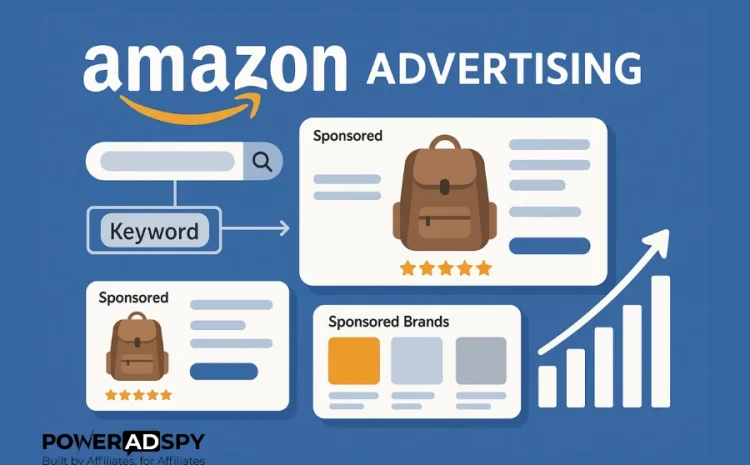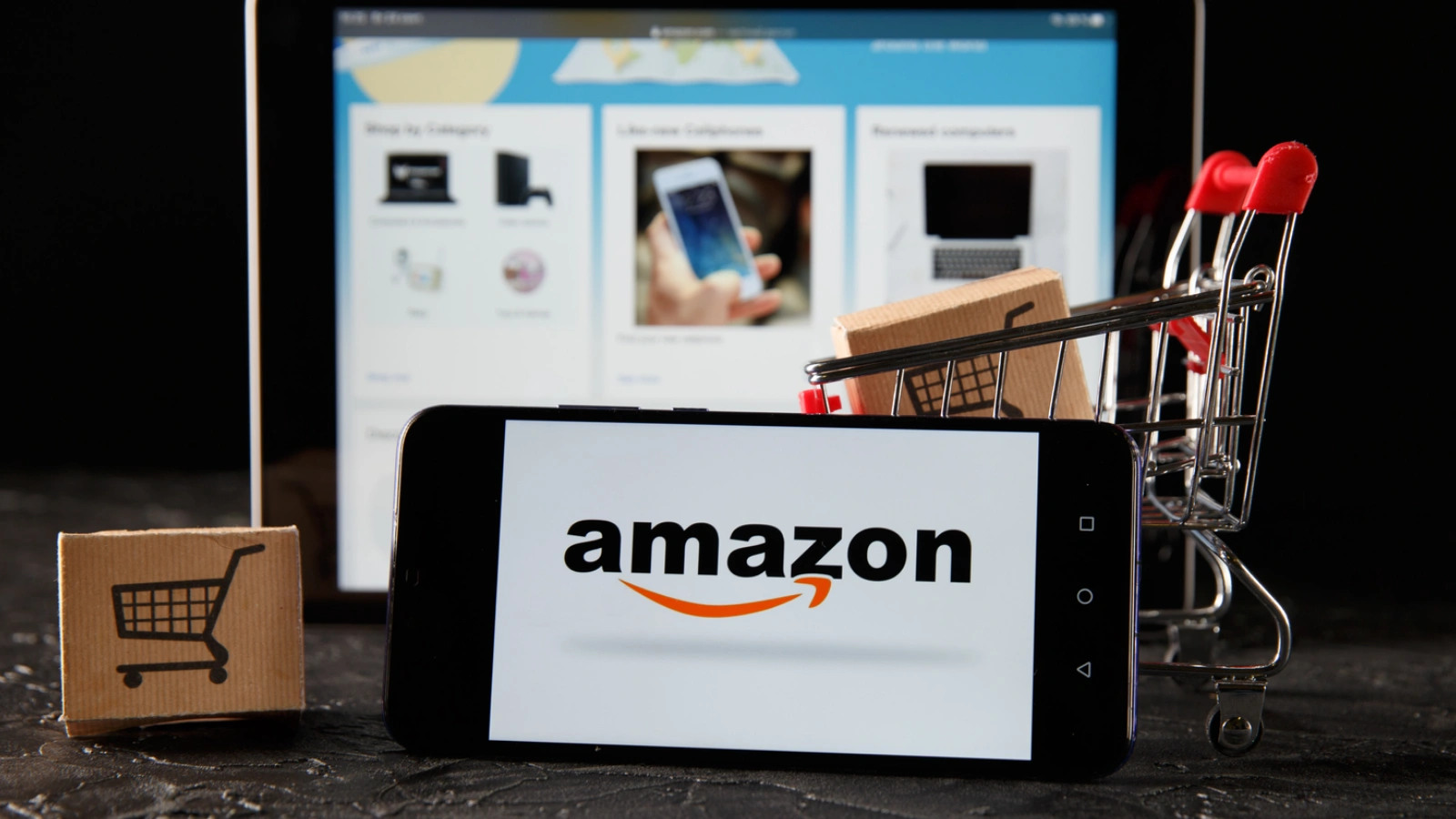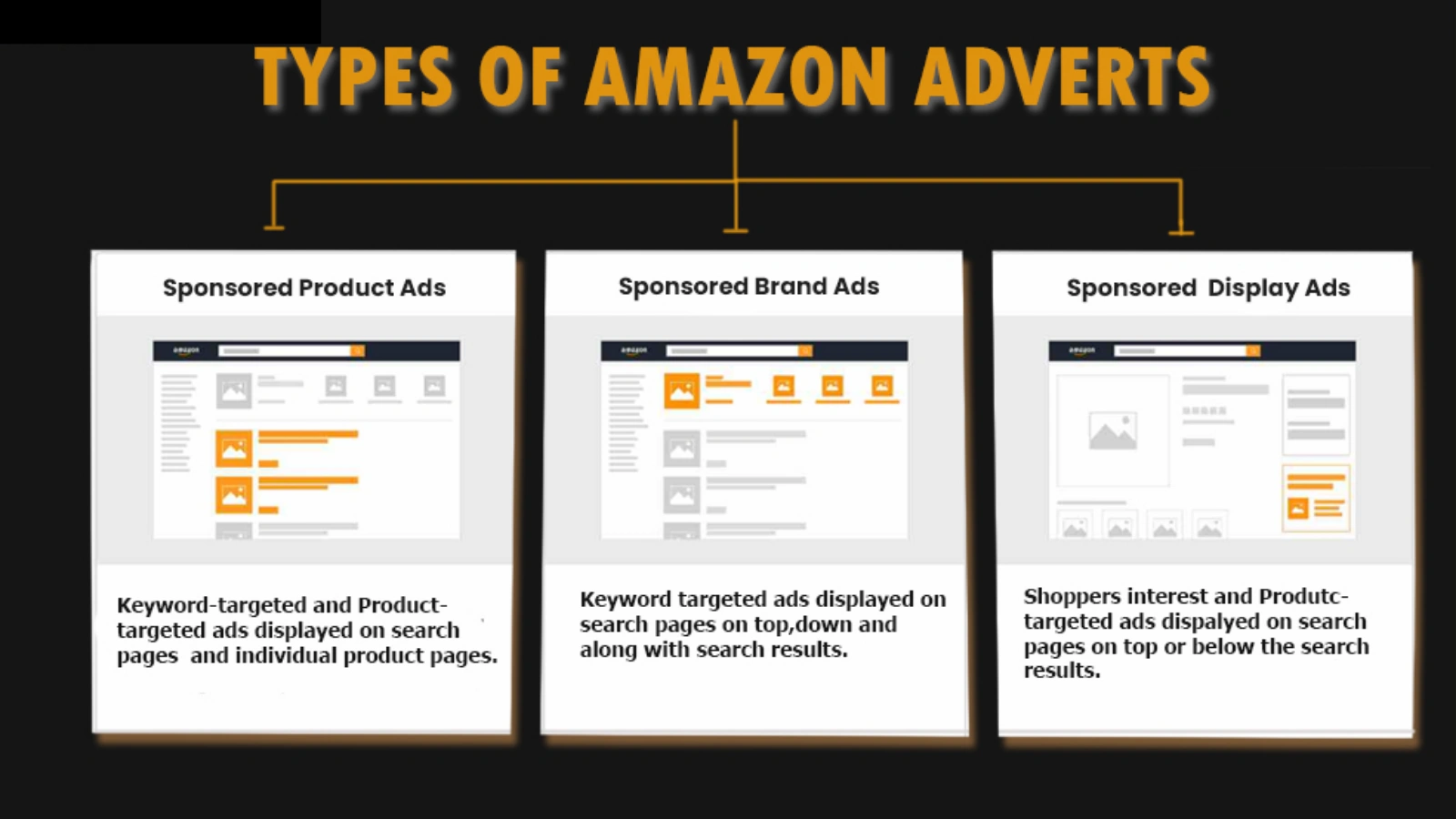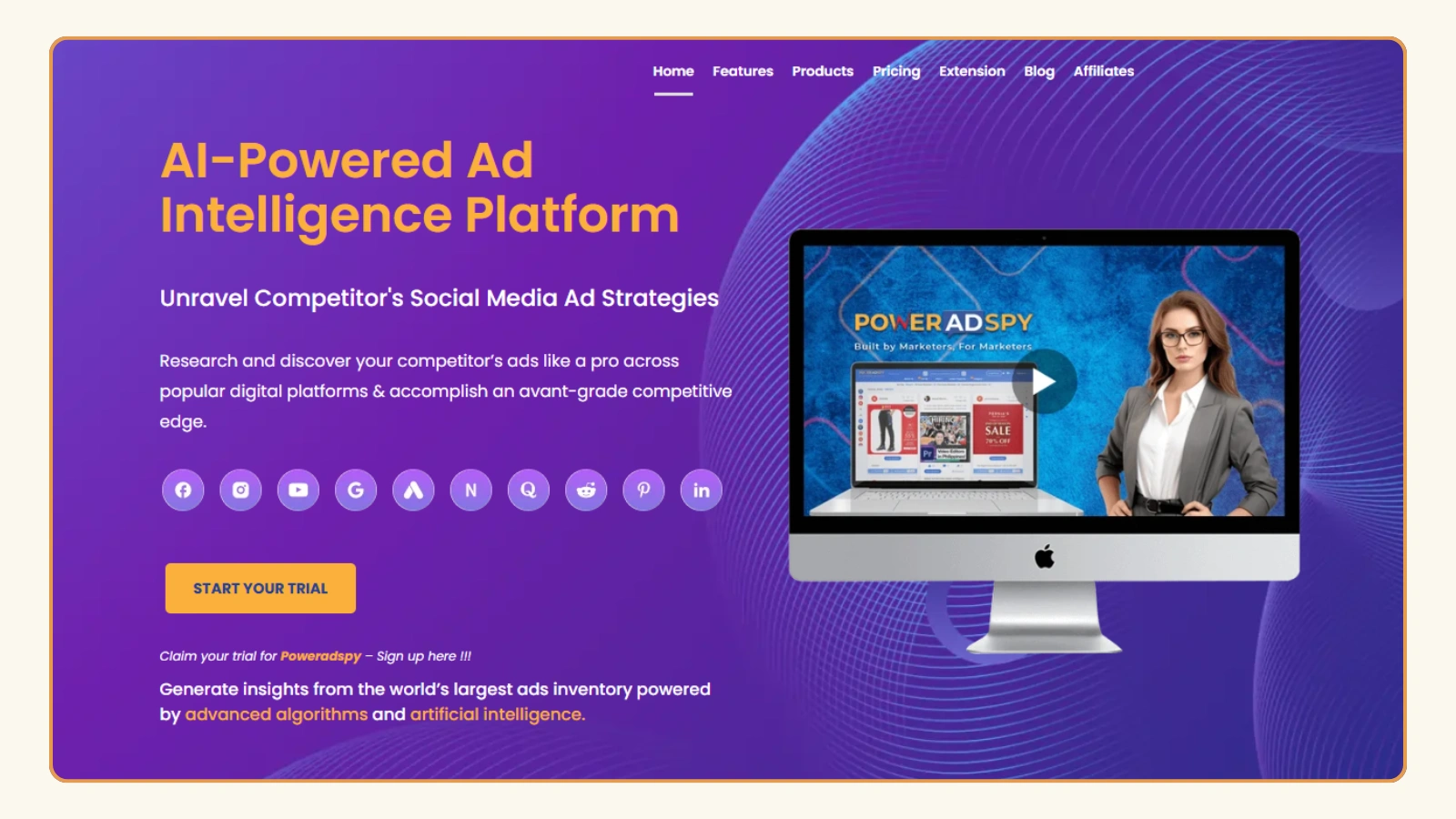How To Master Amazon Advertising For More Product Sales?
Brands constantly face the challenge of getting noticed. With millions of products on Amazon, standing out isn’t just a goal; it’s essential. Thousands of sellers are competing for attention, and the difference between being seen and getting lost lies in how effectively you use Amazon advertising.
We’ll walk through how to build a profitable Amazon advertising strategy from scratch. You’ll learn about the types of ads to use, how Amazon display advertising works, common mistakes to avoid, and how tools like PowerAdSpy can help you analyze competitors and create smarter campaigns. Whether you’re just starting with Amazon ads or looking to scale what’s already working, these insights will give your brand a real edge.
Brands face a constant challenge getting noticed. With millions of products on Amazon, standing out becomes harder every day. That’s where a strong advertising approach kicks in. Amazon advertising isn’t optional anymore; it’s a powerful way to increase visibility, get clicks, and drive sales.
Shoppers trust Amazon. Most of them search for products directly on the platform. When your brand shows up through smart advertising on Amazon, you’re tapping into an audience that’s already ready to buy.
Hit ‘Play’ Button & Tune Into The Blog!
What Is Amazon Advertising And How Does It Work?
Amazon advertising allows sellers to promote products on and off the platform. It works on a pay-per-click (PPC) basis. That means you pay only when someone clicks your ad. Your ads appear in key spots, search results, product pages, and even external websites through Amazon’s demand-side platform.
Grasping the fundamentals is essential before exploring advanced strategies. Sponsored Products show up in search results. Brands give you space to promote your logo and several products. Sponsored Display targets audiences based on shopping behavior. These options form the foundation of a successful Amazon advertising strategy.
Amazon Advertising Strategy: What Actually Drives Results
Success begins with clear goals. Do you want to increase brand awareness, drive product sales, or push a new launch? Define your target, then tailor your strategy to meet that outcome.
Once your goal is set, focus on the core elements that drive performance in Amazon advertising:
1. Targeting the Right Keywords
Keywords connect your product to a shopper’s intent. Choosing relevant, high-converting keywords helps ensure your ads show up in front of people ready to buy. Start with broad keywords to gain visibility, then layer in long-tail and exact match terms for more precise targeting. Utilize Amazon’s auto-suggest feature and tools such as PowerAdSpy to discover what customers are searching for.
2. Bidding Smartly
Your bid determines where your ad appears. Bid too low, and you miss visibility. Bid too high, and your costs explode. Smart bidding means adjusting your spend based on keyword performance, product margin, and competition. Use dynamic bidding strategies, such as increasing bids for placements that convert better, to make the most of your budget.
3. Using Negative Keywords to Avoid Irrelevant Clicks
Negative keywords help filter out irrelevant traffic that eats your budget without bringing results. For example, if you’re selling premium leather shoes, you might want to exclude terms like “cheap” or “synthetic.” This keeps your ad spend focused on buyers more likely to convert.
4. Tracking Metrics like ACOS (Advertising Cost of Sale)
ACOS (Advertising Cost of Sale) indicates the amount you spend on advertising to generate a sale. A low ACOS means you’re spending efficiently, while a high one suggests you’re paying too much. Tracking ACOS, along with other key metrics like CTR (click-through rate), impressions, and conversions, helps you measure the actual effectiveness of your strategy and make data-driven decisions.
Different Types Of Amazon Ads You Should Know
Knowing which ad formats to use and when can make or break your Amazon advertising success. Each type serves a different purpose, from driving clicks to building long-term brand recognition.
Here’s a closer look at the main types of Amazon ads and how they work:
1. Sponsored Products
These advertisements promote individual product listings and appear in search results or on product detail pages. They’re triggered by relevant keywords and are best for driving immediate sales. Sponsored Products work well for both new and established listings and offer high visibility without needing brand registration.
Best For:
- Boosting visibility of specific SKUs
- Competing on high-volume keywords
- Getting fast sales on new or seasonal items
2. Sponsored Brands
These ads allow you to showcase your logo, a headline, and multiple products at once. They appear at the top of search results and help build brand recognition. Sponsored Brands require you to be enrolled in the Amazon Brand Registry.
Best For:
- Strengthening brand presence
- Introducing shoppers to a wider product line
- Increasing overall brand search visibility
3. Sponsored Display
Sponsored Display ads go beyond search results. They target audiences based on behavior and interests, showing your product to users both on Amazon and external websites. This format works well for retargeting shoppers who viewed your product but didn’t purchase.
Best For:
- Retargeting window-shoppers
- Expanding reach of Amazon
- Boosting brand recall and conversions
4. Video Ads
These autoplay ads show up in mobile search results or product pages. Short, engaging videos can explain your product’s value quickly and increase click-through rates. Videos often outperform static images due to their ability to grab attention and show usage in real time.
Best For:
- Explaining complex products
- Capturing attention fast
- Increasing conversions with storytelling
5. Amazon DSP (Demand Side Platform)
DSP lets you programmatically buy display and video ads across Amazon sites, apps, and third-party websites. This is a more advanced solution suited for brands that want broader audience targeting and retargeting capabilities outside Amazon’s ecosystem.
Best For:
- Full-funnel campaign strategies
- Reaching audiences on Amazon
- Advanced targeting and data control
Each of these formats has a unique role in the customer journey. For example:
- Sponsored Products can drive immediate sales
- Sponsored Brands build awareness.
- Sponsored Display retargets previous visitors.s
- Video Ads educate and engage.
- Amazon DSP reaches beyond Amazon’s walls.
Combining these strategically helps you capture attention, nurture interest, and convert more shoppers across all touchpoints.
Amazon Display Advertising: A Deep Dive into Visual Conversions
Amazon display advertising focuses on visual engagement. These ads appear across Amazon and affiliated websites. They catch the eye, especially when shoppers browse but don’t convert immediately.
With compelling imagery and smart retargeting, display ads increase chances of re-engagement. You can also use them to upsell or cross-sell products. They let you build brand presence without depending solely on keyword searches.
Amazon display advertising adds depth to your campaign and works best when paired with Sponsored Product and Brand ads.
Read More!
How To Build A Winning Amazon Advertising Strategy Step By Step?
To win with Amazon advertising, you need more than just a budget; you need a solid, step-by-step plan. Follow this process to build a strategy that consistently drives sales and improves your return on ad spend.
Step 1: Define Campaign Goals
Everything starts with purpose. Do you want to build brand awareness, drive clicks to your listings, or increase conversions? Your goal will shape your entire campaign keywords, ad type, copy, targeting, and even budget.
Example:
- For brand exposure, you might focus on Sponsored Brands or Display ads.
- For direct sales, Sponsored Products with high-converting keywords will work better.
Don’t run ads just to “be visible,” run them with a clear intent and track results accordingly.
Step 2: Conduct Keyword Research
Keywords are the backbone of Amazon advertising. They connect what buyers search for with what you offer. Use keyword tools, Amazon auto-suggestions, and insights from ad spy tools to find terms that match buyer intent.
Step 3: Choose the Right Ad Format
Not every product or goal suits every ad format. Selecting the right type is crucial:
- Sponsored Products are ideal for boosting traffic to individual listings.
- Sponsored Brands help introduce multiple products and build brand trust.
- Sponsored Display excels at remarketing and audience targeting.
- Video ads work well when your product benefits from a demonstration.
- Amazon DSP allows advanced segmentation beyond Amazon’s platform.
Match your format to your goal so the structure supports the outcome you’re aiming for.
Step 4: Segment and Structure Campaigns
Avoid lumping all products or keywords into one campaign. Instead, structure your campaigns logically. Break them down by product type, keyword theme, or audience segment.
Why it matters:
A well-organized campaign lets you easily see what works and what doesn’t. You can control budgets more efficiently, pause underperformers faster, and scale high performers without overlap.
Example:
If you’re selling headphones and speakers, keep them in separate campaigns with separate keyword groups.
Step 5: Optimize Bids and Budgets
Bidding isn’t about spending more; it’s about spending smart. Start with a modest bid, observe performance, and adjust based on the data. If a keyword drives sales at a low cost, raise the bid slightly to win more impressions.
Also, assign budgets strategically. Don’t spread your budget too thin across many campaigns. Instead, invest more in proven performers and test cautiously with new campaigns.
Step 6: Monitor and Optimize
Amazon ads aren’t set-and-forget. They need regular performance checks. Keep a close eye on these metrics:
- Impressions: Are people seeing your ad?
- Click-Through Rate (CTR): Are they engaging with it?
- ACOS (Advertising Cost of Sale): Is it profitable?
- Conversion Rate: Are viewers turning into buyers?
Pause low-performing keywords or ads, test new creatives, adjust bids, and refine targeting. The more data you gather, the sharper your decisions become.
Step 7: Expand and Scale
Once you identify what works, whether it’s a specific keyword, product, or ad format, it’s time to grow. Increase your budget on winning campaigns gradually, and try expanding to related keywords or product categories.
Also, explore new ad types like Sponsored Display or Video to widen your reach. Just ensure you keep tracking results closely so you don’t lose efficiency as you scale.
How PowerAdSpy Helps In Ad Research?
Running successful Amazon advertising campaigns doesn’t have to involve endless trial and error. Smart sellers and marketers use PowerAdSpy, a comprehensive platform that blends the capabilities of ad spy tools, ad intelligence software, and engagement analytics to uncover what works in their niche and apply it directly to their campaigns.
Here’s how PowerAdSpy gives you the edge:
Smart Search Algorithm for High-Performing Ads
Instead of browsing aimlessly, use PowerAdSpy’s smart algorithm to find ads based on real engagement. It provides you with options to filter ads using sort results by likes, comments, shares, and dates to filter only the most effective ads in your category. This way, you spend less time researching and more time implementing proven concepts.
Engagement-Oriented Insights
PowerAdSpy focuses on what matters: how audiences respond. See which creatives spark the most interaction. This helps you understand what messaging, visuals, and offers connect with your target audience, allowing you to shape your Amazon advertising for a stronger impact.
Call-to-Action (CTA) Performance Analysis
CTAs make or break your conversions. PowerAdSpy allows you to identify which call-to-action phrases are getting clicks in your niche. You can model your CTAs based on real-world data instead of guessing what works.
Track Shopify Competitor Ads
For sellers who also run Shopify stores alongside Amazon, PowerAdSpy lets you study the top ads run by successful Shopify brands. Use their strategies to build synergy between your off-Amazon and on-Amazon advertising approaches.
Ad Spy Tools vs Guesswork: Why Smart Sellers Use Ad Intelligence Software
In today’s competitive e-commerce landscape, successful Amazon sellers no longer rely on hunches or trial-and-error. They use data-driven insights to guide every move, especially when it comes to advertising. That’s where ad intelligence software like PowerAdSpy comes in.
Instead of wasting time and money testing unproven strategies, smart sellers leverage ads spy tool to analyze what’s already working in their niche. These tools offer a behind-the-scenes look into competitors’ ads, giving you access to high-performing creatives, targeting strategies, and campaign structures before you even spend a dollar.
With an ad spy tool like PowerAdSpy, you can:
- Identify winning ad strategies in your category without running blind tests.
- Avoid costly mistakes by learning from what hasn’t worked for others.
- Accelerate your campaign launch with proven ad formats, CTAs, and targeting ideas.
- Benchmark performance by analyzing real engagement metrics like likes, shares, and comments.
Guesswork may have worked years ago, but not in today’s data-driven marketplace. Sellers who depend on guesswork often end up spending more and achieving less. In contrast, those who use ad spy tools and ad intelligence software make informed decisions, optimize faster, and generate better ROI.
Read More!
How To Run An Instagram Sponsored Post For Growth?
Common Mistakes To Avoid When Advertising On Amazon
Even experienced sellers can lose money on Amazon ads by making simple but costly mistakes. A successful Amazon advertising strategy requires more than just launching a campaign; it demands consistent monitoring, smart adjustments, and attention to detail.
Here are some of the most common pitfalls to watch out for:
1. Ignoring Keyword Match Types
Many sellers rely only on broad match keywords, which can lead to irrelevant traffic and wasted ad spend. Use a mix of broad, phrase, and exact match types to control who sees your ads and improve targeting precision.
2. Failing to Track Performance Regularly
Launching your ads and walking away is a recipe for inefficiency. Regularly monitor performance metrics like click-through rate (CTR), conversion rate, ACOS, and ROAS to spot issues early and adjust accordingly.
Expert Tips To Optimize ROI From Amazon Advertising
Running ads isn’t enough. To truly grow your brand and boost revenue, you need to extract maximum value from every dollar spent. Here are expert-backed strategies to increase your Amazon advertising ROI and stay ahead of the competition:
1. Focus on High-Converting Keywords – Not Just Volume
Chasing high-volume keywords may get you clicks, but not necessarily sales. Prioritize keywords that are highly relevant to your product and audience intent. These keywords often convert better, cost less, and improve your ad efficiency over time.
2. Leverage Retargeting to Win Back Visitors
Not every shopper converts on the first visit. Use Amazon’s display ads or DSP to retarget users who browsed your product but didn’t purchase. Retargeting keeps your product top-of-mind and significantly boosts conversion rates.
3. Create Compelling, High-Quality Creatives
Your ad copy and product images directly impact click-through and conversion rates. Use:
- Lifestyle images that show your product in action
- Clear, benefit-focused headlines
- Enhanced Brand Content (EBC) or A+ content for added trust
Great creatives build trust and drive higher engagement.
With the right ad spy tool, you make informed decisions faster, improving your strategy with proven data.
Conclusion
Mastering Amazon advertising isn’t about big budgets. It’s about smart moves. When you combine well-structured strategies with tools like PowerAdSpy, you don’t just compete, you lead.
Advertising on Amazon helps your products get found, trusted, and purchased. With clarity, tools, and action, you can create a growth engine that runs on repeat.
FAQs
Q1. What is the best way to start with Amazon advertising?
The best starting point is with Sponsored Products. Focus on targeting relevant, high-intent keywords and monitor key metrics like ACOS (Advertising Cost of Sales). This gives you quick insights into what’s working and where to optimize.
Q2. How often should I optimize my Amazon ads?
Aim to review and refine your Amazon ad campaigns at least once a week. Check performance metrics, adjust keyword bids, test new creatives, and use negative keywords to eliminate wasted spend.











